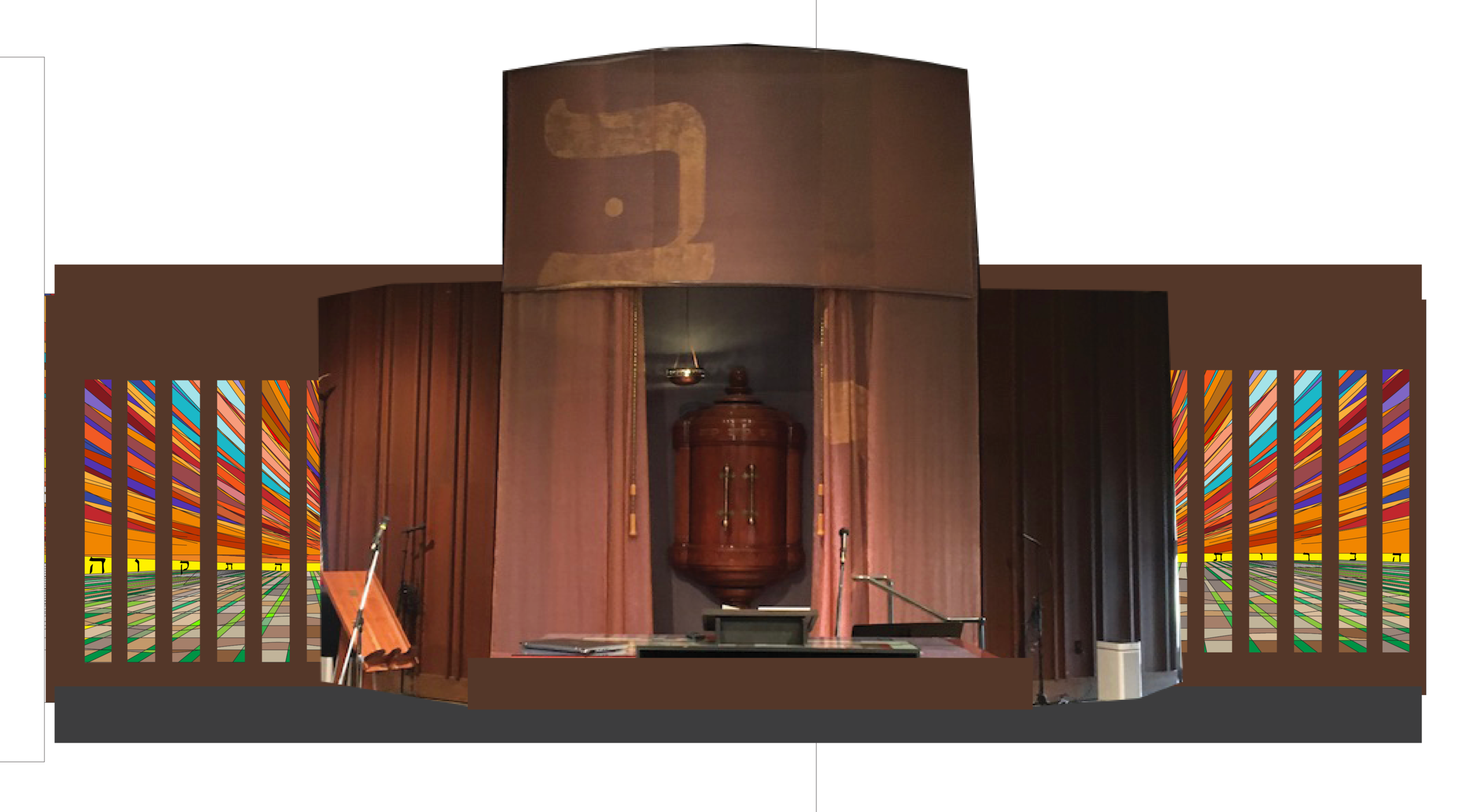
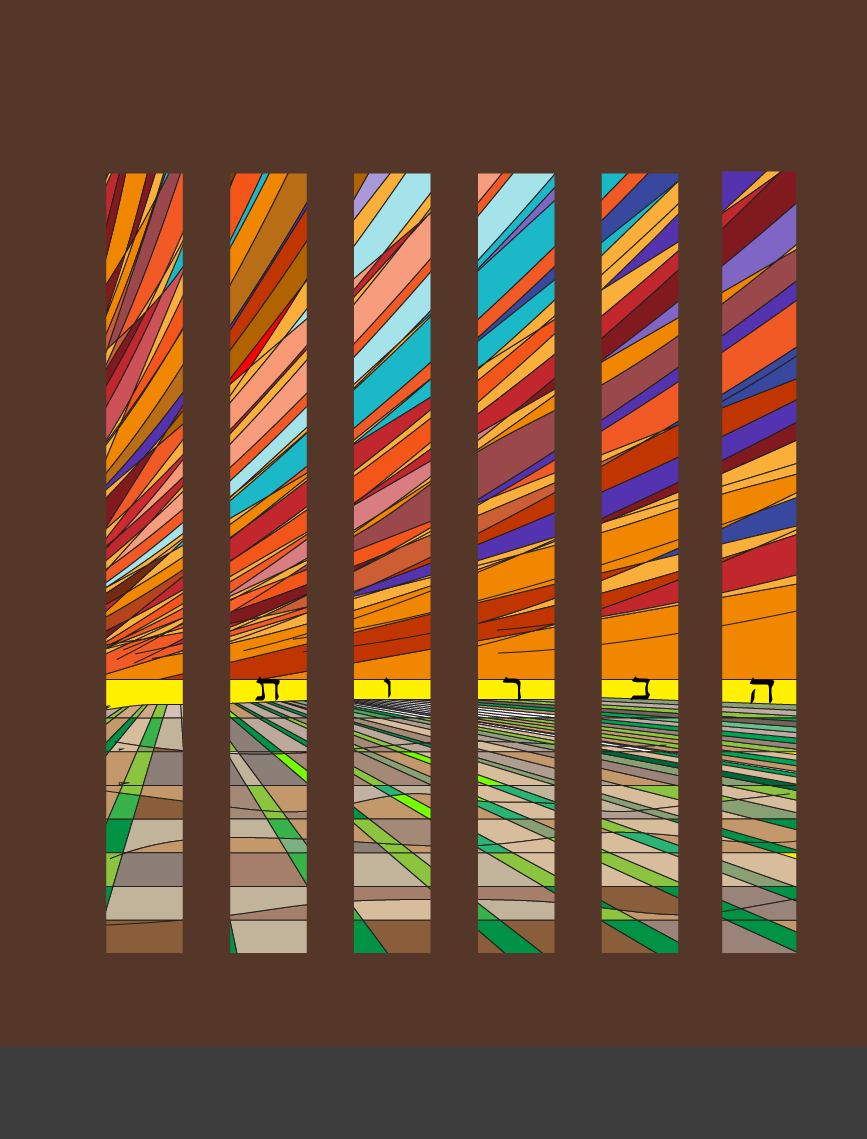



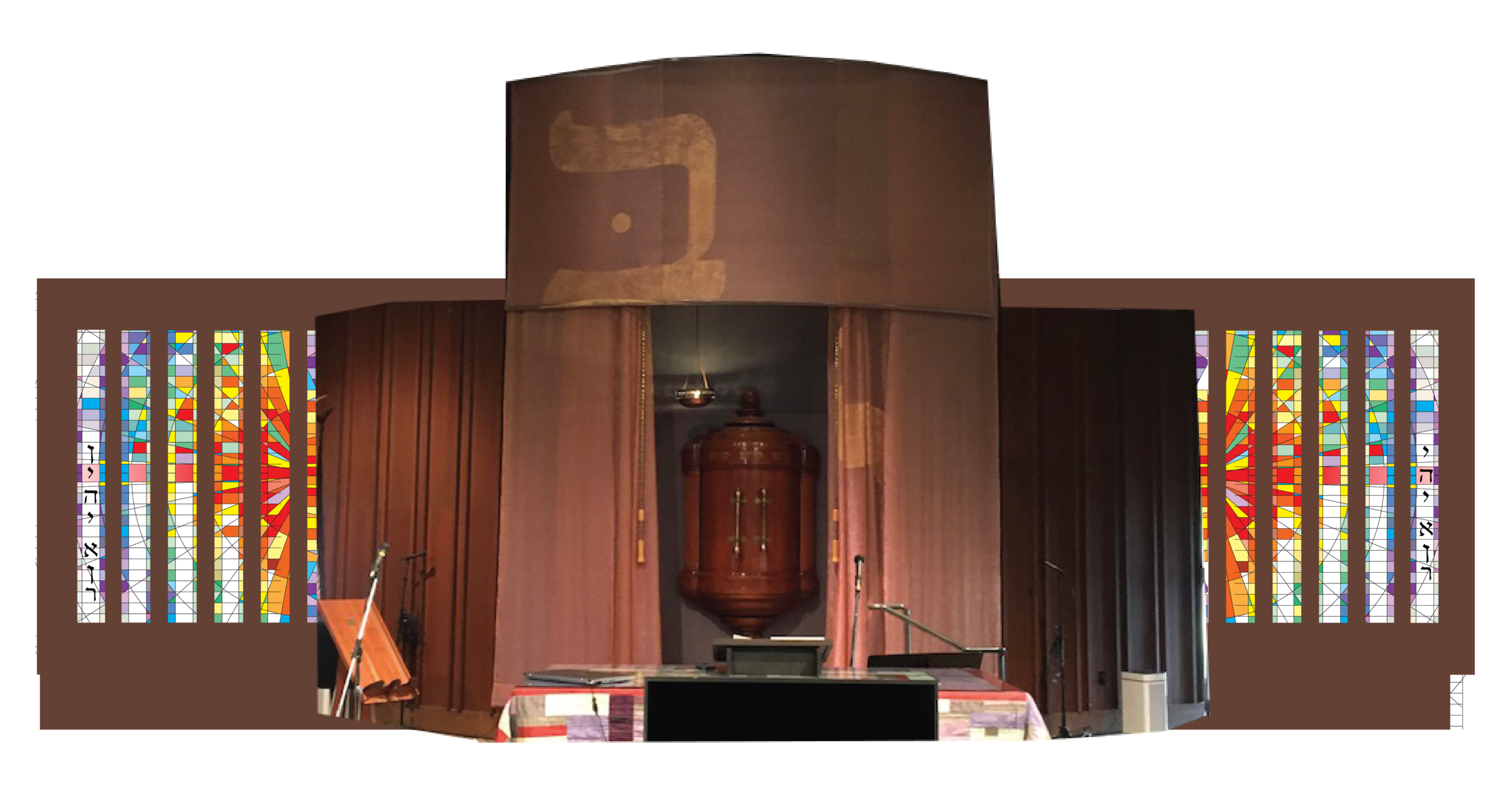




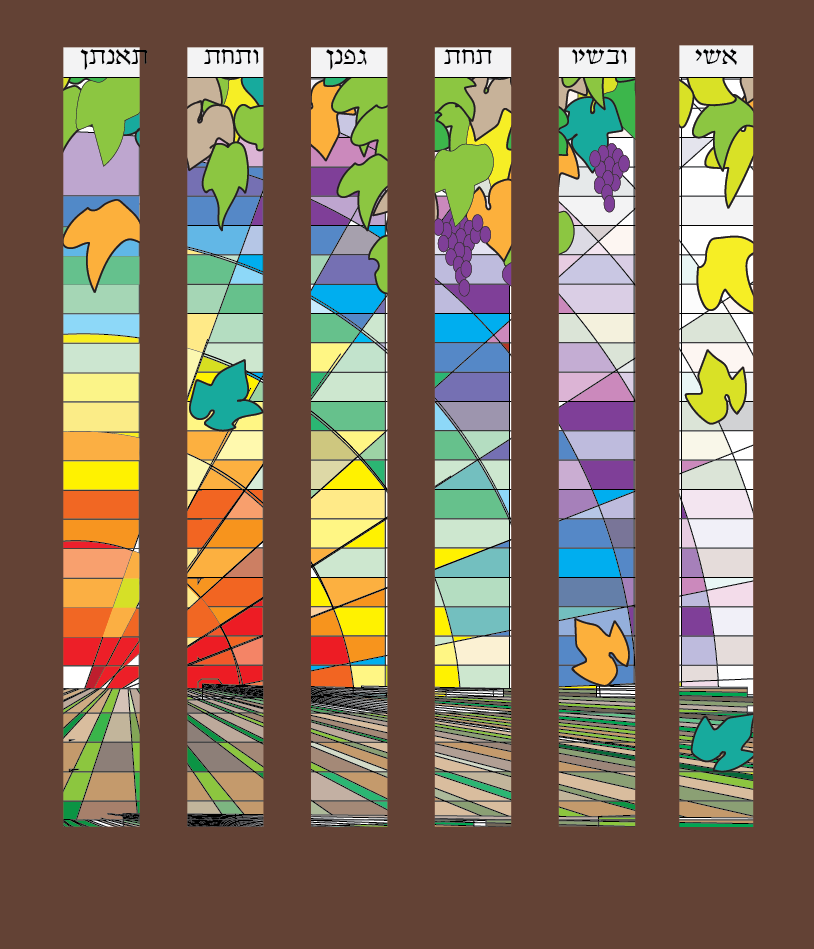
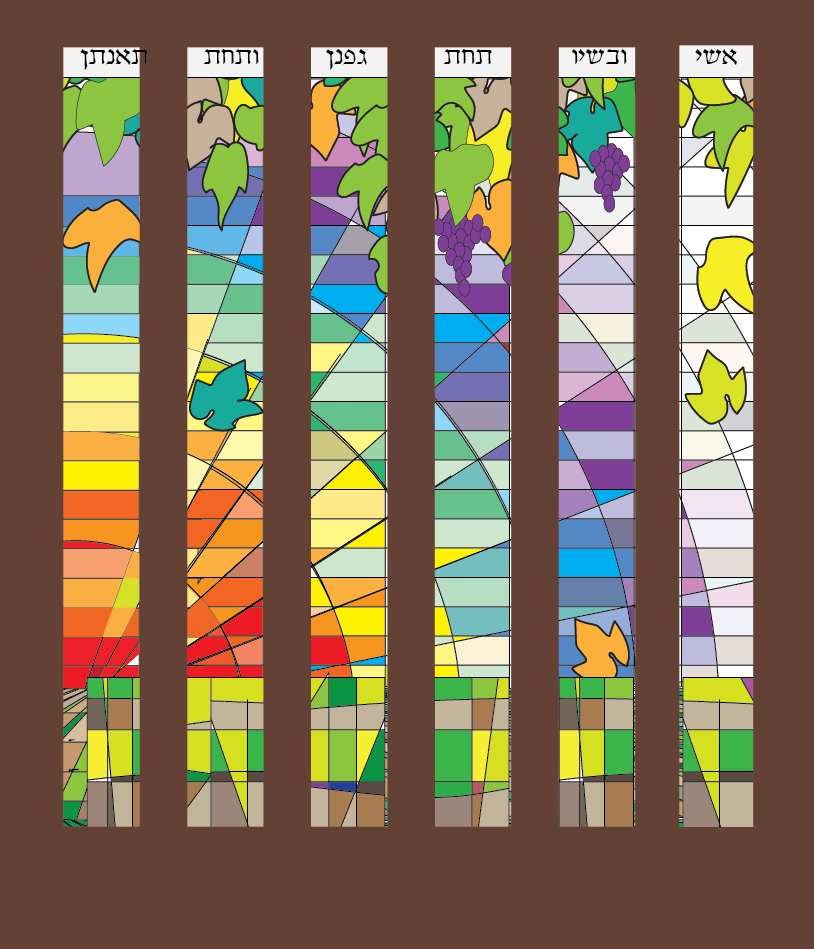


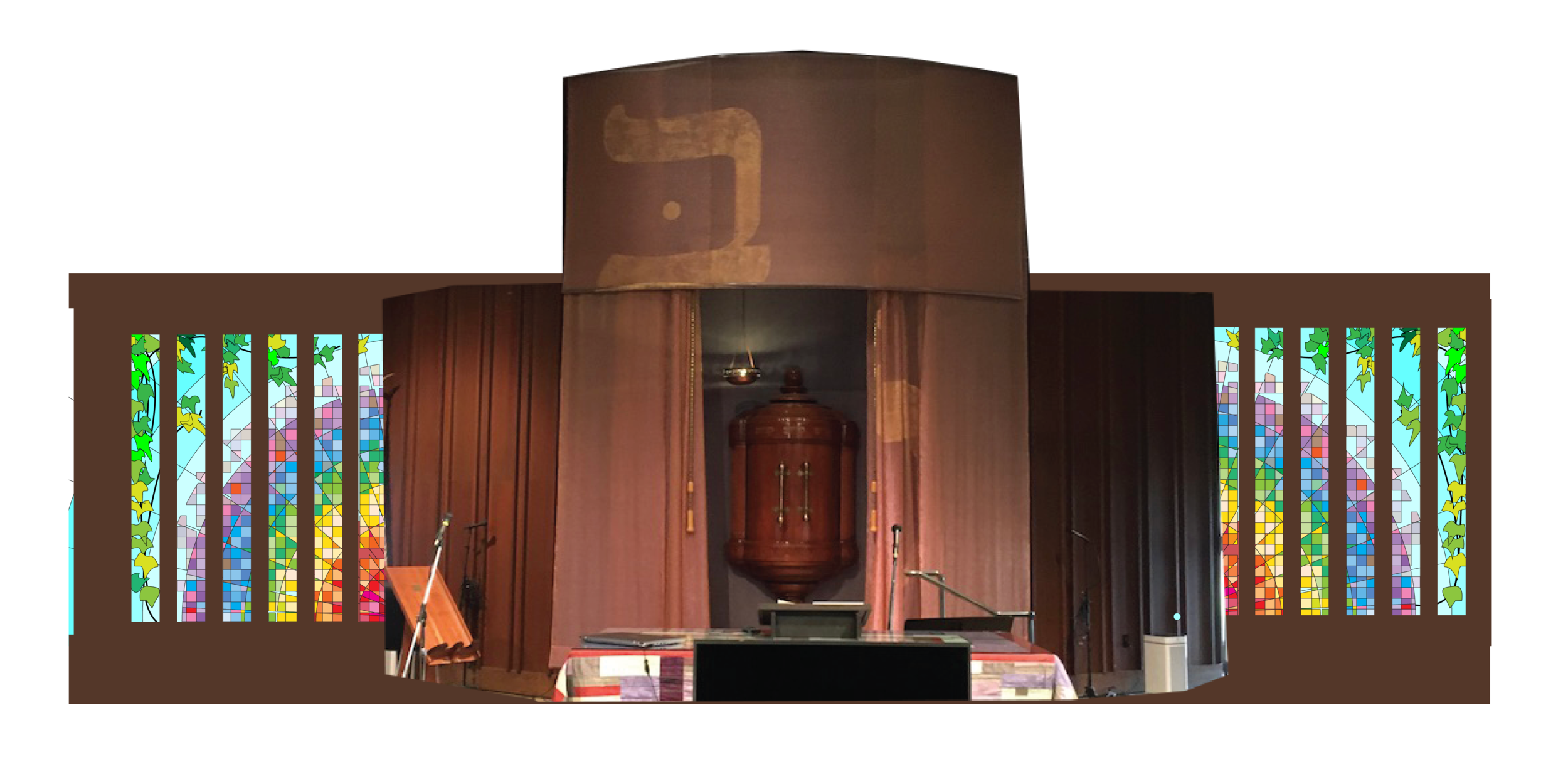
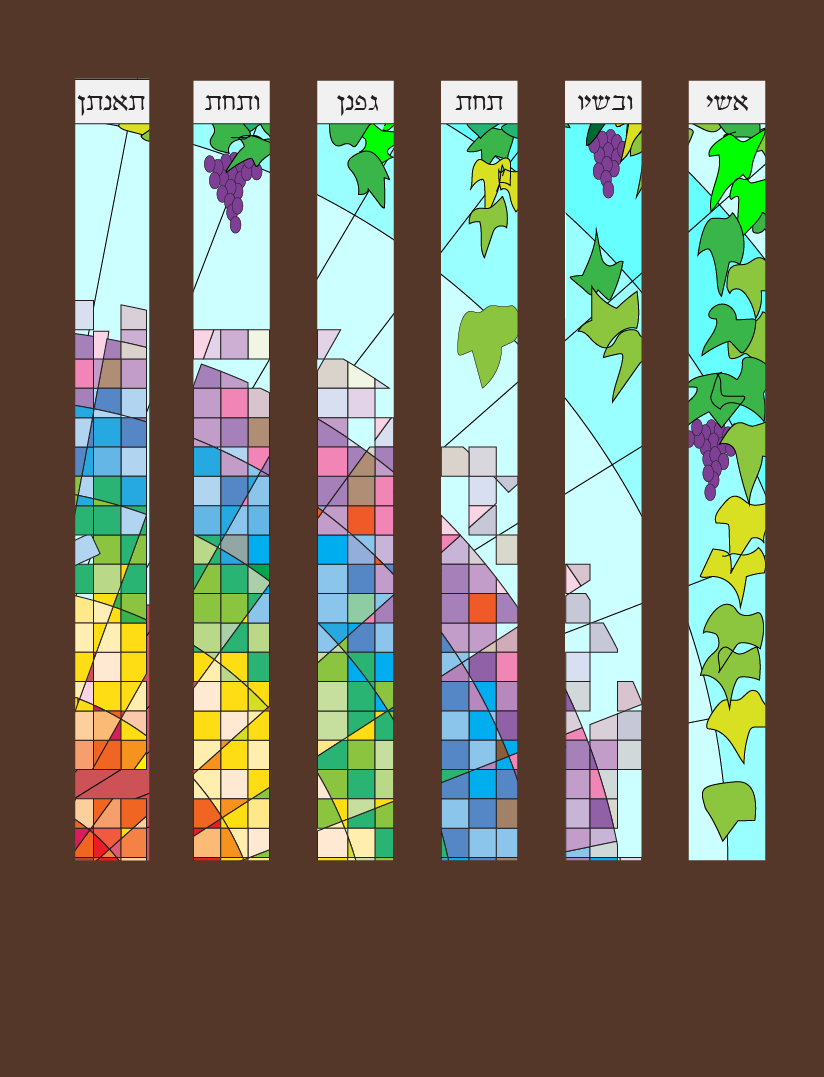
designers and fabricators of stained glass windows for synagogues
Today we have more ideas to share with you and have worked on a few drawings to present. I’m excited to show them to you.
First, a word of disclaimer: These drawings are not finished, fully fleshed out designs but like collages to present our ideas in a visual form, somewhere between what you might call an “artist’s conception” and a finished design that is ready to enlarge into the cartoon, from which the window is actually made. Still, they have to look like completed designs because you, the committee, can only have a reaction to what you see on the screen
Second, an important precursor:
Last Tuesday, I came to Davis to look again at the sanctuary and to make a few measurements, only having seen it once, nearly two years ago. Immediately, I realized that we’ll have to design for all 12 windows not just 10. Anything else is going to look makeshift or unfinished. Consequently, all the work we have done for today is based on a 12-window configuration.
We have a few slides to show you and some brief comments. I think we can take questions and input as we go along and then again afterward.
Today we have more ideas to share with you and have worked on a few drawings to present. I’m excited to show them to you.
First, a word of disclaimer: These drawings are not finished, fully fleshed out designs but like collages to present our ideas in a visual form, somewhere between what you might call an “artist’s conception” and a finished design that is ready to enlarge into the cartoon, from which the window is actually made. Still, they have to look like completed designs because you, the committee, can only have a reaction to what you see on the screen
Second, an important precursor:
Last Tuesday, I came to Davis to look again at the sanctuary and to make a few measurements, only having seen it once, nearly two years ago. Immediately, I realized that we’ll have to design for all 12 windows not just 10. Anything else is going to look makeshift or unfinished. Consequently, all the work we have done for today is based on a 12-window configuration.
We have a few slides to show you and some brief comments. I think we can take questions and input as we go along and then again afterward.
Hatikvah
When I drew it, I immediately knew it had to be called “Hatikvah”, The Hope. Between earth and sky a slim line of light exists. That is our hope. Between the fiery, billowing heavens and the endless human hand upon the earth, the promise, Ha Brit, draws us on. It’s about our faith, our belief, our survival. It makes me think of the Israelites poised at the shore of the Red Sea. It’s a new message for a new millennium.
Hatikvah detail
Here you can see the word, “Hatikvah,” silhouetted against the yellow light.
On the other side the word, “Habrit” , the promise or the covenant is used.
Order and Discord
Here is a slightly different conception in which the mosaic spectrum gives way to a space divided by an intersection of circles, kind of like order giving way to chaos: a dichotomy.
Also, here is a different visual representation of the land.
Let There Be Light
In this composition we have expanded on the idea of the starburst mosaic spectrum, the power of the emanation of Torah
Let There Be Light, detail
Let There Be Light
Let There Be Light, detail
The letters are meant to be rendered in glass pieces.
You Shall Be Holy
The light of enlightenment, the power of Torah, the mystery of faith emanates from above. You can see the branches of the “tree whose roots are in the heavens.” A traditional kabalistic conception of the tree of life. The words from the Torah, Kidoshim Tirev, are in Hebrew on one side and in English, “You shall be holy,” on the other.
You Shall Be Holy, detail
In this version, the text is meant to be rendered in painted letters.
Micah 4:4
In this design, we have built on the mosaic like spectrum, which represents to us the “light emanating from Torah, its power and you might say, its spiritual energy.” Above we have an arbor of grapes on one side and figs on the other. The text which runs across the top translates to: “They shall sit every man under his vine and under his fig tree and none shall make them afraid” I have always loved this vision of Paradise and its homage to the beauty of nature.
Below, we have the land, the fields the vanishing point to the horizon, literally, a picture of the landscape around Davis and the central valley.
Micah 4:4 detail
Here is a closer view of one side of the design.
Is it a rainbow? I don’t know. But, what is more magical that a rainbow?
I love the converging lines and the radiating lines. There are no vertical lines, only horizontal ones. I remember Rabbi Schulweiss once telling us that Judaism was a horizontal religion. Jewish laws are not concerned with the vertical, heaven above and hell below, but with the horizontal i.e. the way people treat each other.
Micah 4:4 detail
A different rendering of the land
Garden of Eden
A different arbor with the same passage from Micah4:4 Each person shall sit beneath their grapevine and their fig.”
Garden of Eden, detail
Its like the three levels of consciousness, the rational, in the text, the earthly, in the leaves and the spiritual power of Torah.